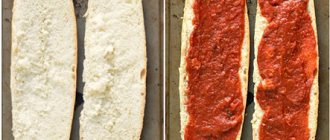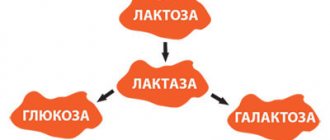With protein intolerance, a sharp deterioration in well-being occurs; ignoring the problem can provoke more severe health consequences. Research on the benefits and harms of gluten has not stopped and is constantly ongoing; the first signs of an allergy to the ingredient require diagnostic confirmation and exclusion of the protein component from the diet.
What is gluten protein
By refers to a large subgroup of protein elements present in wheat and some types of cereals. The second name for gluten (after direct contact with water) is gluten. Protein gives the dough its characteristic structure, allowing it to expand in volume due to the carbon dioxide trapped inside.
Gluten contains a protein complex, the basis of which is gliadin and glutenin. The first element becomes a threat to health, provoking undesirable consequences.
Myth #2: Avoiding gluten will help you lose weight.
The gluten-free diet was advertised, as often happens, by Hollywood stars. In particular, America's favorite TV presenter Oprah Winfrey in the summer of 2008 amazed fans with her chic forms and stories about a three-week cleansing diet. The star excluded foods containing gluten and caffeine, as well as meat and sugar from her diet. But that was only the beginning. In 2011, tennis player Novak Djokovic publicly stated that his year was going so well not only because of his hard training - it was because of his new gluten-free diet! True, Djokovic clarified that he had to change his diet due to the discovery of intolerance to this protein. The athlete noted an improvement in his health, a surge of energy and a decrease in body weight; he even became more confident in playing! Everyone remembered the tennis player’s fantastic results, but they forgot that he was forced to give up his favorite foods like pizza and pasta due to illness, and not for the sake of a slender figure.
The harm of gluten
Dishes prepared on its basis can cause significant damage to the body, expressed in:
- in digestive disorders;
- intestinal pathologies;
- the development of celiac disease (genetic pathology) - destruction of the intestinal walls with a decrease in the absorption of nutrients.
An allergic reaction to gluten can provoke neurological disorders, with the progression of dementia. Researchers are studying the effect of wheat protein on the formation of autism and epilepsy, but agree that the element takes an indirect part in their formation.
Compliance with a gluten-free diet in trials has proven that children with a wheat allergy are less likely to suffer from nasal breathing dysfunction, and they have a reduced frequency of relapses of adenoiditis and laryngopharyngeal reflux (reflux of a bolus of food from the gastrointestinal tract into the esophagus).
DIET
“Recently, the diagnosis of “gluten intolerance” has been made more and more often precisely because the amount of gluten in the diet has increased tenfold compared to the times when we bought fewer prepared foods. Hence the fashion for a gluten-free diet.”
The second reason why a so-called gluten allergy may occur is a recent intestinal virus. In both cases, the doctor recommends eliminating gluten-containing foods from your diet for a month (no less!) (see the “Gluten-free diet” block).
“In general, even if nothing particularly bothers you, a gluten-free diet is a detox that needs to be done, for example, a couple of times a year, given the modern diet,” says the nutritionist. Well, in order to avoid problems, the doctor advises adhering to the principles of rational nutrition: no more than four slices of bread and 150 grams of porridge per day, less “fast food”, more fiber, which cleanses the intestines.
Nutritionists ADVISE to go on a gluten-free detox diet a couple of times a year to RESTORE the VILLUS of the small intestine damaged by gluten and cleanse the body.
Gluten-free diet rules:
1) Eliminate wheat and rye bread, pasta made from wheat flour, pearl barley (barley), and oats.
2) Read labels: In corn flakes or your favorite sauce, gluten may be hidden behind the words “stabilizer” or “wheat starch.”
3) Buy gluten-free fermented milk products: this could be, for example, liquid kefir or yogurt; Finnish manufacturers are famous for their scrupulousness towards gluten - they do not write gluten free on the packaging, but if gluten is added to yogurt, they will definitely indicate this. But farmed dairy products, according to the nutritionist, may well contain gluten - again, pay attention to the composition.
4) Eliminate sausages and sausages: in addition to the already known enemies of a healthy lifestyle - dyes and flavor enhancers - they also contain gluten.
How to replace these products: gluten-free bread and pasta (sold in the diet departments of supermarkets and specialty online stores): any grains except oats and barley; rice or buckwheat noodles (Attention: choose buckwheat noodles carefully, sometimes up to 20% wheat flour is added to them).
The nuances of intolerance and allergy to protein
The problem occurs in 40% of the population. Gluten intolerance rarely causes serious complications. Gluten causes attacks of nausea with vomiting, heartburn, but does not cause structural damage to the intestinal tract.
The main clinical signs of the pathological condition occur when there is an excessive amount of baked goods consumed. The level of harm from wheat protein is associated with the microflora of the gastrointestinal tract. The presence of opportunistic microorganisms Psa leads to an inflammatory process on the intestinal walls.
An allergic reaction and celiac disease, in contrast to classical intolerance, cause symptoms of intoxication with minimal consumption of products containing wheat. Patients are forced to follow a diet that excludes any gluten content.
Gluten enteropathy is a complex disease of autoimmune etiology. The inflammation that occurs when consuming gluten leads to intestinal damage and poor absorption of nutrients. As a result, the body does not receive the necessary vitamins and minerals, and the patient develops hypovitaminosis. With celiac disease, the risk of death is higher than in healthy people.
Complications associated with pathology include:
- dermatitis;
- stomatitis;
- iron deficiency anemia;
- female infertility;
- delay in children of both physical and mental development.
Symptoms do not make it possible to distinguish an allergic reaction from an autoimmune disease, so self-medication and the use of a gluten-free diet are inappropriate. Patients should undergo a complete laboratory diagnostic examination, which will help identify the causes of allergies and identify the specific protein that is problematic.
Myth No. 1. It is better not to give children foods containing gluten: it causes allergies.
This is wrong. Gluten is not harmful to healthy children. Where did this myth come from?
It all started in 2001, it was then that the World Health Organization recommended not giving gluten-containing foods to infants under 6 months of age in order to reduce the risk of developing allergic diseases and bronchial asthma. However, 4 years later a refutation was published in the Journal of the American Medical Association. Studies have shown that if gluten-containing foods are not introduced before 7 months, the risk of allergies increases. The final recommendation is: “4–6 months of age is the best time to start feeding your baby gluten-containing foods.”
It's another matter if there is a hereditary predisposition to celiac disease. In this case, gluten-containing products should be introduced with caution and the baby’s condition should be closely monitored. If food causes a rash, diarrhea, constipation, bloating, etc., you should consult a doctor to find out the cause of this reaction. You may need to undergo a series of tests. And only after this the doctor will be able to tell whether it is possible to give the child foods containing this protein.
Healthy babies can be given gluten-containing foods from 4–6 months.
Gluten (gluten) is an almost pure protein: 100 g of dry product contains about 70 g of protein. Therefore, it is often used as a protein supplement, for example, in the production of baby food and breakfast cereals.
Causes of false diagnosis
An erroneous diagnosis is due to the fact that the clinical symptoms of celiac disease resemble signs of an allergy to other components of cereals. Digestive disorders can be provoked by individual carbohydrates contained in vegetables, berries, and fruits.
If the patient has an intolerance to one of the ingredients, then the gluten-free diet will be ineffective. Sometimes the condition worsens due to irritable bowel syndrome. Pathology refers to common diseases of the gastroenterology section.
HOW IS THE DIAGNOSIS MADE?
WHO warns: every day there are more and more people in the world diagnosed with gluten intolerance (in the WHO report I found the figure “UP TO 90% of the population” - but I don’t want to believe in this).
“The diagnosis of “celiac enteropathy,” or, in other words, gluten intolerance, is indeed not easy to make,” says Evgenia Belousov.
First, you need to take a blood test for antibodies to gliadins (another name for gluten from wheat).
If the readings exceed the norm, the doctor may suspect a disease. But for an accurate diagnosis, a second step is needed - a biopsy of the small intestine. “Of course, not all patients agree to take this test,” says the doctor. And this is understandable. Gluten intolerance, according to doctors, often occurs with symptoms that, of course, worry a person, but much less than the prospect of a small intestinal biopsy. A gluten allergy does not necessarily mean severe diarrhea: a person may be bothered by, say, fermentation, bloating, pain or constipation. “The same symptoms can occur with pancreatitis or, say, with irritable bowel syndrome - although with this syndrome the large intestine suffers, and with celiac enteropathy - the small intestine,” says Evgeny Belousov. “Therefore, we can only say for sure after a biopsy.”
“Are there really no other ways, doctor?” I ask, remembering how many times my stomach has hurt over the past week. But it turns out there is another way.
Methods for determining sensitivity to gluten
Diagnostics includes:
- Biopsy from the surface of the small intestine. If damage to the mucous membrane is detected, they proceed to the second stage.
- Switch to eating foods that do not contain dangerous proteins - for at least 6 months. After this, the biopsy is repeated. If the situation has returned to normal, proceed to the third stage.
- Transfer the patient to the previous diet for 6 months. Then the examination is carried out a third time. Repeated damage to the intestinal walls allows a diagnosis of celiac disease.
Where is gluten found: list of products
- Cereals.
- Bakery products.
- A variety of baked goods (pies, muffins, pizza, cookies).
- Pasta made from wheat flour.
- Semolina.
- Couscous.
- Soy products.
- Sauces.
- Spices in cubes.
- Canned food.
- Semi-finished products.
- Sweets.
- Sausages.
- Syrups.
- Ice cream.
- Alcohol.
If you are diagnosed with celiac disease, you will have to completely eliminate these foods from your diet. This does not mean that you doom yourself to a monotonous diet - you can find tasty substitutes for everything. Now patients with intolerance to elastic protein or gluten can purchase everything for a special diet - flour from which you can make healthy pies, sweets that do not cause stomach pain and discomfort, ready-made breakfasts and bread for a healthy snack.
Gluten-free cereals and Bebi Premium cookies
The Bebi Premium line of gluten-free products includes buckwheat, rice and corn porridge, as well as Bebiki cookies, which are made from corn flour and are perfect for kids who are starting to learn about cereal dishes. Gluten-free porridges are produced on special non-allergenic production lines. This guarantees their quality and safety, eliminating the possibility of contact with gluten-containing grains. For the production of gluten-containing cereals, other lines are used - allergenic line. Product packaging also eliminates contact between gluten-free and gluten-containing cereals.
Rice. 2. Special packaging technologies that provide for the complete absence of any contact between gluten-free and gluten-containing cereals during the production process.
What can advanced celiac disease lead to?
In the absence of proper nutrition and timely correct diagnosis, this disease can lead to disruption of the functioning of various body systems:
- These are diseases caused by insufficient absorption of nutrients - weakness of tooth enamel, osteoporosis.
- Also, gluten intolerance can lead to menstrual irregularities and other gynecological disorders.
- In young children, advanced celiac disease can cause ADD, severe autism, and mental disorders.
- Patients who do not take care of their health and do not follow a diet are more susceptible to intestinal lymphoma.
- Sensitivity to gluten can cause lactose intolerance to milk and dairy products that contain it.
- Left untreated and untreated, celiac disease increases the risk of food allergies.
Is there gluten in oatmeal, rice, flour and millet?
- Oatmeal - if the manufacturer claims that there is no dangerous type of protein in the composition, and the packaging contains a corresponding mark, you can safely buy it.
- Rice – this food usually does not cause problems for people with celiac disease, but if you feel heaviness and bloating after eating pilaf for lunch, replace processed (polished) rice with wild rice.
- Flour - it all depends on what kind of flour we are talking about. Wheat contains elastic protein, as does rye, but amaranth and rice do not.
- Millet is included in the list of prohibited foods for those diagnosed with gluten intolerance or an allergy to this substance.
Above, we told you which foods contain protein that is dangerous to our body, and gave a complete list of what contains gluten. However, the diet of a patient with celiac disease is not a death sentence for those who want to eat tasty and varied. To prove this, let’s talk about the food that can and even should be consumed.
- Amaranth - the incredibly healthy seeds of this plant help against many diseases. The grains do not contain elastic protein, which injures the intestinal walls, and are rich in beneficial amino acids and vitamins. They produce butter, flour, and can be used to make a variety of baked goods, which people suffering from gluten intolerance are deprived of.
- Quinoa is a grain native to South America that can easily replace the usual rye or wheat. It contains nine important amino acids, and you can cook anything from this product - from warm salads and pilaf to diet burgers.
- Buckwheat contains a lot of rutin and magnesium, which improves heart function, but there is no protein, which is potentially dangerous for people with gluten intolerance.
Ingredients in English that should alert you
When purchasing products without label translation, for example, abroad, you need to carefully study the composition so as not to miss the following components:
- wheat, rye, barley, oats are the names of gluten-containing cereals;
- stabilizer, emulsifier, starch, flavoring, hydrolyzed vegetable protein, vegetable protein, vegetable gum, malt, malt flavoring, modified food starch and modified starch are additives that may contain gluten. The label may contain traces of gluten means that the product may contain traces of gluten.










